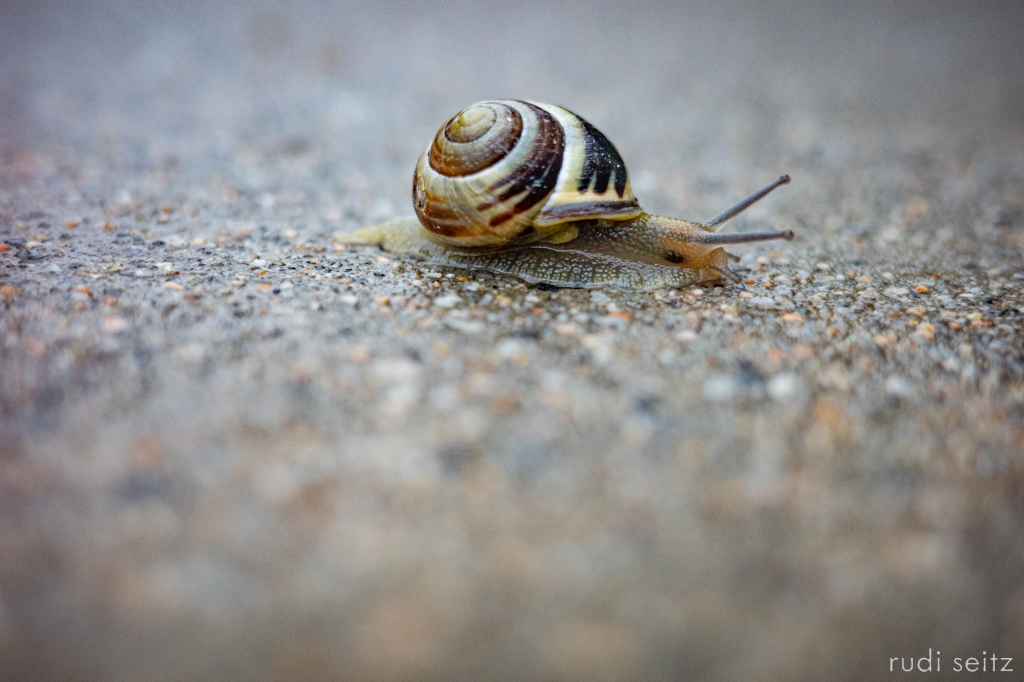This is a snail with direction.
Been somewhere; going somewhere.
Its past and future make a straight line.
As it slithers along that line, untroubled by its own languid tempo, does the snail set an example for us?
Does it convey the message that even when we are moving at “a snail’s pace,” we should stay on course, following our chosen path, trusting that the destination will arrive in time?
On second thought, we might say that this photograph is a lie.
The snail’s apparent “path” is artificial. It was made by the photographer, who used a technical trick to create the appearance of a clear line traversing the blurred sidewalk.
This path was imposed, but not on the snail, who was oblivious to it. Imposed on the viewer.
So does this photograph speak about false paths? Wishful thinking? Deception?
Is this photograph a warning that any act of interpretation can skew reality, creating the appearance of a path, a direction, progress — where there is none?
In fact — and you’ll have to trust me on this — the snail was moving roughly along the path shown here. So by way of creative distortion, the photograph reveals a “truth” of the situation that would be harder to see otherwise. Without the blurred background and foreground, the snail might have appeared to be lost on this vast expanse of cement. I couldn’t talk with the snail, of course, but it seemed pretty confident in where it was going.
So does this photograph make the case that an image can be “honest” by lying a little? Does it say that art can reveal the truth to us by bending the truth? Does it show how clarity can be achieved not despite blurriness, but through its deliberate use?
There’s a protagonist here – the snail – and a supporting character, the observer who saw the snail. And we should care about them why? We might care about them if realize that we can’t escape being these characters ourselves – the protagonist, and the observer – any time we think of who we are, where we’ve been, and where we’re going. The observer in us might even lament the “snail” in us for moving too slowly towards what we want.
But as observers of our own lives, we have the freedom to blur some areas and bring others into focus, creating the appearance of a path that we might be following. Sometimes we have to imagine a route that’s not obvious in the full complexity of the scene. Once we’ve shown it to ourselves in a simplified picture, we can cleave to it. By imagining that path, we can manifest it.
A snail doesn’t need to use imagination to find clarity about its path because it doesn’t have an imagination to create confusion about its path in the first place – but we do.
And while we don’t have to thank a snail for inspiring a reflection that it had no intent to inspire and no ability to comprehend, we still can. So, thank you, snail! Hope you get where you’re going. ■
